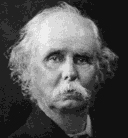Origin of the Idea
 <a onClick="window.open('/olcweb/cgi/pluginpop.cgi?it=gif::::/sites/dl/free/0077337727/124310/origins_image.gif','popWin', 'width=70,height=90,resizable,scrollbars');" href="#"><img valign="absmiddle" height="16" width="16" border="0" src="/olcweb/styles/shared/linkicons/image.gif"> (1.0K)</a> <a onClick="window.open('/olcweb/cgi/pluginpop.cgi?it=gif::::/sites/dl/free/0077337727/124310/origins_image.gif','popWin', 'width=70,height=90,resizable,scrollbars');" href="#"><img valign="absmiddle" height="16" width="16" border="0" src="/olcweb/styles/shared/linkicons/image.gif"> (1.0K)</a> | 4.1 Price Elasticity of Demand |  <a onClick="window.open('/olcweb/cgi/pluginpop.cgi?it=gif::::/sites/dl/free/0077337727/124310/origins_image.gif','popWin', 'width=70,height=90,resizable,scrollbars');" href="#"><img valign="absmiddle" height="16" width="16" border="0" src="/olcweb/styles/shared/linkicons/image.gif"> (1.0K)</a> <a onClick="window.open('/olcweb/cgi/pluginpop.cgi?it=gif::::/sites/dl/free/0077337727/124310/origins_image.gif','popWin', 'width=70,height=90,resizable,scrollbars');" href="#"><img valign="absmiddle" height="16" width="16" border="0" src="/olcweb/styles/shared/linkicons/image.gif"> (1.0K)</a> | 4.2 Price Elasticity of Supply |
 <a onClick="window.open('/olcweb/cgi/pluginpop.cgi?it=gif::::/sites/dl/free/0077337727/124310/origins_image.gif','popWin', 'width=70,height=90,resizable,scrollbars');" href="#"><img valign="absmiddle" height="16" width="16" border="0" src="/olcweb/styles/shared/linkicons/image.gif"> (1.0K)</a> <a onClick="window.open('/olcweb/cgi/pluginpop.cgi?it=gif::::/sites/dl/free/0077337727/124310/origins_image.gif','popWin', 'width=70,height=90,resizable,scrollbars');" href="#"><img valign="absmiddle" height="16" width="16" border="0" src="/olcweb/styles/shared/linkicons/image.gif"> (1.0K)</a> | 4.1 Price Elasticity of Demand |
Almost as important as his formalizing of demand and supply was Alfred Marshall's contribution to the concept of elasticity. As with many of the concepts Marshall formalized, he did not originate the idea of elasticity, he merely transformed it into a useful tool of analysis. As Marshall explained elasticity of demand, "The elasticity (or responsiveness) of demand in a market is great or small according as the amount demanded increases much or little for a given fall in price, and diminishes much or little for a given rise in price."(1)
Marshall's discussion of elasticity was not limited to demand. He applied it as well to supply, and the concept of elasticity has since been extended into cross-price and income elasticities. As a result, economists of today need to be more precise in their terminology when discussing elasticity. What Marshall referred to as the "elasticity of demand," economists now refer to as the "price elasticity of demand," to distinguish it from the cross-price and income elasticities of demand.
Alfred Marshall (1842-1924) was born in Clapham, England, the son of a cashier of the Bank of England. Despite his father's wishes that he study for the ministry at Oxford, Marshall attended Cambridge University, where he studied mathematics, physics and economics. In 1877 he married one of his students, Mary Paley. They collaborated on his first book, The Economics of Industry, published in 1879.(2) The leading economist of his time, Marshall belonged to what economists refer to as the Neoclassical school of economic thought. Much of what appears in your textbook comes from Neoclassical economics, and Marshall's contributions have stood the test of time.
|  <a onClick="window.open('/olcweb/cgi/pluginpop.cgi?it=jpg::::/sites/dl/free/0077337727/124320/origin20_1.jpg','popWin', 'width=178,height=208,resizable,scrollbars');" href="#"><img valign="absmiddle" height="16" width="16" border="0" src="/olcweb/styles/shared/linkicons/image.gif"> (20.0K)</a> <a onClick="window.open('/olcweb/cgi/pluginpop.cgi?it=jpg::::/sites/dl/free/0077337727/124320/origin20_1.jpg','popWin', 'width=178,height=208,resizable,scrollbars');" href="#"><img valign="absmiddle" height="16" width="16" border="0" src="/olcweb/styles/shared/linkicons/image.gif"> (20.0K)</a> |
Although Marshall used mathematics extensively in his economic models, he emphasized that the math was merely a shorthand language, and not the foundation for economic inquiry and analysis. Marshall established his own set of rules for the use of mathematics in economic theorizing:
"(1) Use mathematics as a shorthand language, rather than as an engine of inquiry. (2) Keep to them till you have done. (3) Translate into English. (4) Then illustrate by examples that are important in real life. (5) Burn the mathematics. (6) If you can't succeed in (4), burn (3). This last I [Marshall] did often."(3)
- Ibid. 102.
- William Breit and Roger Ransom, The Academic Scribblers, (New York: Holt, Rinehart and Winston, Inc., 1971), 21.
- Alfred Marshall, Memorials of Alfred Marshall, ed. A.C. Pigou (London: Macmillan, 1925), 427.
Photograph courtesy of: Used from the website of Thoemmes Press. Original owner unknown.
 <a onClick="window.open('/olcweb/cgi/pluginpop.cgi?it=gif::::/sites/dl/free/0077337727/124310/origins_image.gif','popWin', 'width=70,height=90,resizable,scrollbars');" href="#"><img valign="absmiddle" height="16" width="16" border="0" src="/olcweb/styles/shared/linkicons/image.gif"> (1.0K)</a> <a onClick="window.open('/olcweb/cgi/pluginpop.cgi?it=gif::::/sites/dl/free/0077337727/124310/origins_image.gif','popWin', 'width=70,height=90,resizable,scrollbars');" href="#"><img valign="absmiddle" height="16" width="16" border="0" src="/olcweb/styles/shared/linkicons/image.gif"> (1.0K)</a> | 4.2 Price Elasticity of Supply |
Alfred Marshall understood that supply was determined by costs of production. Because producers face rising marginal costs, they must be offered higher prices to induce them to sell more (increased quantity supplied). The responsiveness of quantity supplied to changes in price (the price elasticity of supply) was, according to Marshall, determined by how much time sellers had to adjust production. The division of time into three periods, as appears in the text, was a distinction first offered by Marshall.
Alfred Marshall (1842-1924) was born in Clapham, England, the son of a cashier of the Bank of England. Despite his father's wishes that he study for the ministry at Oxford, Marshall attended Cambridge University, where he studied mathematics, physics and economics. In 1877 he married one of his students, Mary Paley. They collaborated on his first book, The Economics of Industry, published in 1879.(1)
The leading economist of his time, Marshall belonged to what economists refer to as the Neoclassical school of economic thought. Much of what appears in your textbook comes from Neoclassical economics, and Marshall's contributions have stood the test of time.
|  <a onClick="window.open('/olcweb/cgi/pluginpop.cgi?it=jpg::::/sites/dl/free/0077337727/124320/origin20_1.jpg','popWin', 'width=178,height=208,resizable,scrollbars');" href="#"><img valign="absmiddle" height="16" width="16" border="0" src="/olcweb/styles/shared/linkicons/image.gif"> (20.0K)</a> <a onClick="window.open('/olcweb/cgi/pluginpop.cgi?it=jpg::::/sites/dl/free/0077337727/124320/origin20_1.jpg','popWin', 'width=178,height=208,resizable,scrollbars');" href="#"><img valign="absmiddle" height="16" width="16" border="0" src="/olcweb/styles/shared/linkicons/image.gif"> (20.0K)</a> |
Although Marshall used mathematics extensively in his economic models, he emphasized that the math was merely a shorthand language, and not the foundation for economic inquiry and analysis. Marshall established his own set of rules for the use of mathematics in economic theorizing:
"(1) Use mathematics as a shorthand language, rather than as an engine of inquiry. (2) Keep to them till you have done. (3) Translate into English. (4) Then illustrate by examples that are important in real life. (5) Burn the mathematics. (6) If you can't succeed in (4), burn (3). This last I [Marshall] did often."(2)
- William Breit and Roger Ransom, The Academic Scribblers, (New York: Holt, Rinehart and Winston, Inc., 1971), 21.
- Alfred Marshall, Memorials of Alfred Marshall, ed. A.C. Pigou (London: Macmillan, 1925), 427.
Photograph courtesy of: Used from the website of Thoemmes Press. Original owner unknown. |

